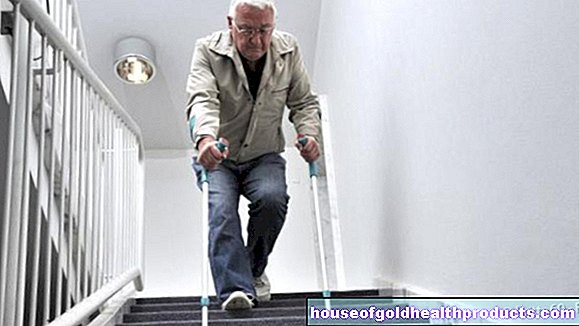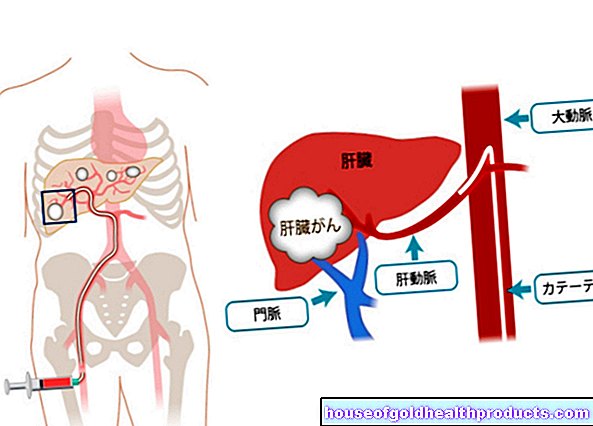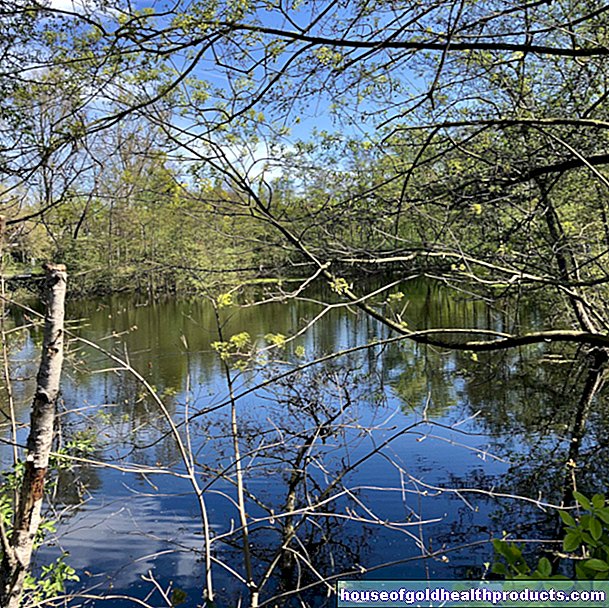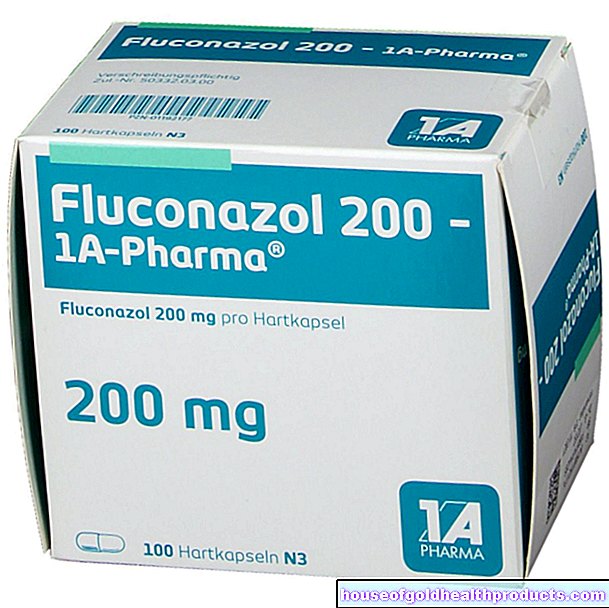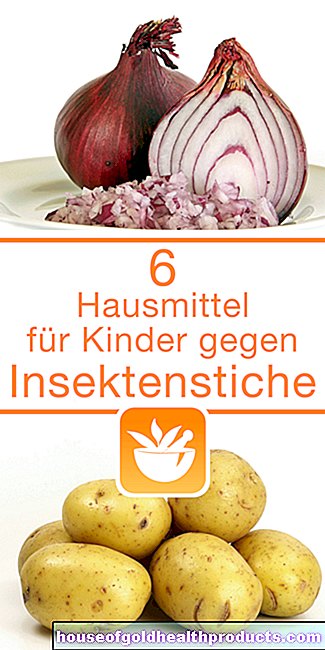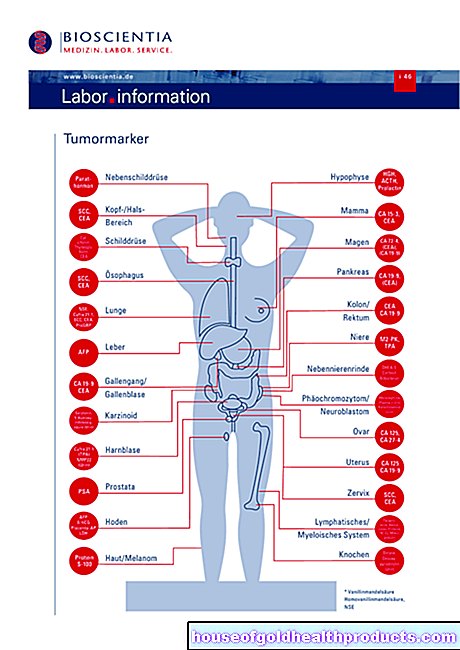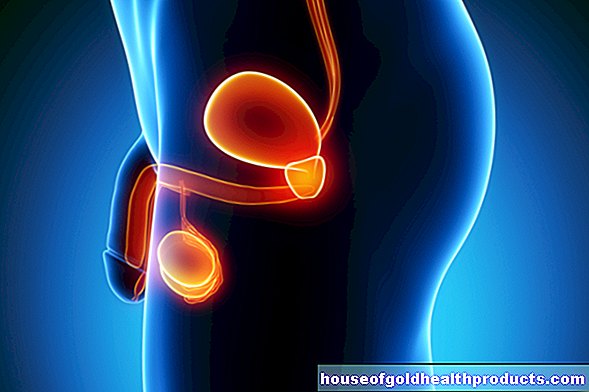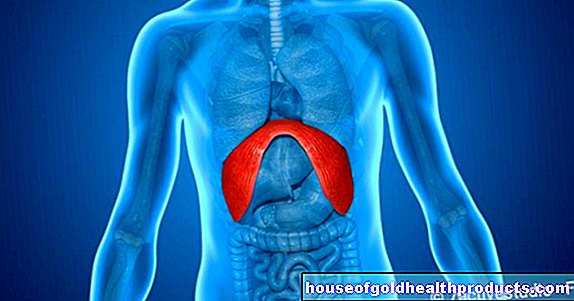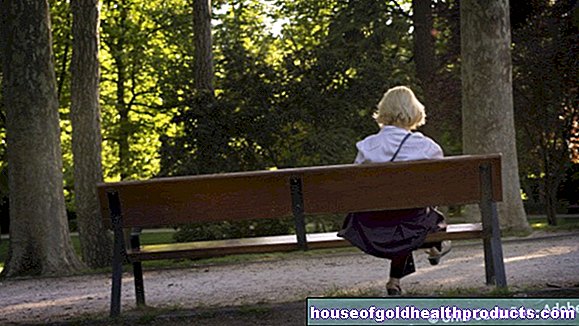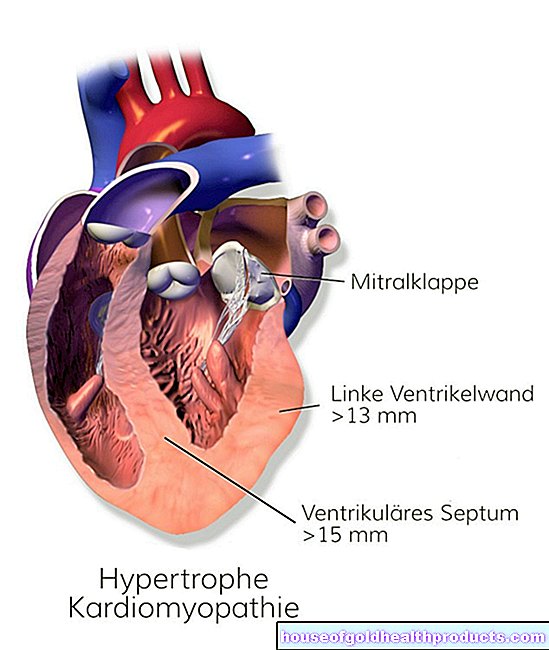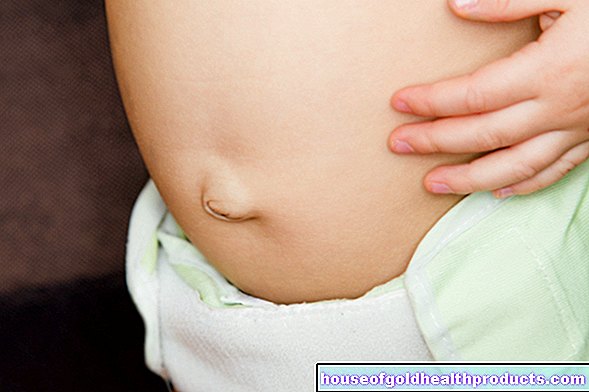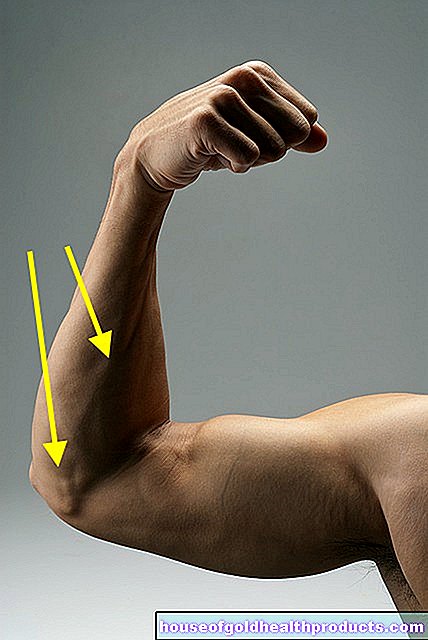Omarthrosis
Ricarda Schwarz studied medicine in Würzburg, where she also completed her doctorate. After a wide range of tasks in practical medical training (PJ) in Flensburg, Hamburg and New Zealand, she is now working in neuroradiology and radiology at the Tübingen University Hospital.
More about the experts All content is checked by medical journalists.Omarthrosis (shoulder arthrosis) is a degenerative joint disease of the shoulder joint. It occurs more frequently with certain injuries and illnesses. Omarthrosis does not always cause symptoms such as pain and restricted mobility. If such symptoms occur, therapy is necessary. Conservative measures and the use of an artificial joint are available. Here you can read everything you need to know about osteoarthritis.
ICD codes for this disease: ICD codes are internationally recognized codes for medical diagnoses. They can be found, for example, in doctor's letters or on certificates of incapacity for work. M19

Omarthrosis: general
In omarthrosis, the shoulder joint wears out. This osteoarthritis of the shoulder joint is less common than osteoarthritis of the hip or knee. This is because the shoulder only has to carry a small part of the body weight and is therefore less stressed. This is why osteoarthritis of the shoulder is better tolerated than hip or knee osteoarthritis.
Shoulder pain in people over the age of 60 is caused by omarthrosis in five to eleven percent of cases. But there are also many people with shoulder osteoarthritis who have no symptoms.
ACG osteoarthritis
Omarthrosis or shoulder arthrosis is arthrosis in the shoulder joint, i.e. the joint between the head of the humerus and the shoulder blade. Nearby is the acromioclavicular joint (ACG or AC joint), a joint connection between the collarbone and the shoulder blade. Arthrosis can also develop here, the so-called ACG arthrosis (AC joint arthrosis, AC arthrosis, shoulder arthrosis). It mainly causes pain when moving the shoulder above the horizontal plane.
ACG arthrosis) is much more common than omarthrosis. Since injuries in the AC joint are up to ten times more common in men than in women, ACG arthrosis is also more common in men. Almost all men over 50 years of age have ACG osteoarthritis on the X-ray. In addition to injuries, illnesses can also trigger ACG osteoarthritis. In some cases, the cause of the disease remains unexplained. The diagnosis and therapy of ACG arthrosis essentially correspond to those of omarthrosis.
Omarthrosis: causes and development
As with other forms of osteoarthritis, a distinction is made between primary and secondary forms of osteoarthritis.
The cause of primary shoulder osteoarthritis is unclear. Various factors probably have to come together to cause osteoarthritis in the shoulder joint. Hereditary and mechanical aspects are important. When the arm is raised to about shoulder height, the most stress is placed on the shoulder joint. Movements in this position could therefore more likely lead to osteoarthritis shoulder. Extra weights in hand increase the risk.
Secondary omarthrosis is when the shoulder osteoarthritis is the result of another disease. A shoulder joint that is damaged due to illness or injury cannot be stressed as much as a healthy one. Secondary omarthrosis can develop even with less stress. The following diseases promote osteoarthritis:
- Shoulder joint instability due to anatomical variants (glenohumeral instability)
- Shoulder dislocation ("dislocated" shoulder)
- Upper arm fracture in the shoulder area (proximal humerus fracture)
- rheumatic joint inflammation (rheumatoid arthritis)
- Joint inflammation caused by germs (septic arthritis)
- dead tissue in the shoulder (necrosis)
- Cartilage disease (chondromatosis)
- Malfunction of the rotator cuff (functionally important muscle-tendon group on the shoulder)
Omarthrosis: symptoms
Osteoarthritis in the shoulder can cause pain. These mainly occur when the arm is raised. After more intense physical exertion, pain at rest can prevent those affected from sleeping on the sick shoulder. The mobility of the shoulder is limited only late in omarthrosis.
Despite symptoms, everyday life can be mastered well in almost all cases, even with osteoarthritis in the shoulder.
Omarthrosis: diagnosis
You can read about the measures required to diagnose omarthrosis and other forms of osteoarthritis in the article on osteoarthritis.
Omarthrosis: therapy
Omarthrosis can initially be treated conservatively, for example with medication, exercise therapy and warmth. You can read more about this in the article on osteoarthritis treatment.
If the conservative treatment does not improve the omarthrosis symptoms sufficiently, an operative therapy can be considered.
Omarthrosis: surgery
The damaged articular cartilage can be removed by arthroscopic debridement. For this purpose, various instruments are inserted into the shoulder in one operation. The damaged areas can be searched for and removed with a camera. This procedure can be useful in the early stages of the disease. As a rule, however, omarthrosis continues to progress and causes symptoms again later.
If there is pronounced osteoarthritis, it can make sense to replace the shoulder joint with an artificial joint. The endoprosthesis usually improves existing pain well. In addition, the shoulder becomes more flexible again. Depending on the individual requirements, omarthrosis patients receive a partial or full prosthesis.
Tags: digital health alternative medicine drugs
